SOLD. Wynn Bullock ‘Child in Forest’ Photograph 1952
Wynn Bullock, ‘Child in Forest’, 1952
Gelatin silver print
Image size:
Paper size:
Edition:
Signature or Estate Stamp:
Condition:
Provenance:
Price: ON HOLD.
CHILD IN FOREST, 1951
The photograph is of an ancient redwood forest. A lush growth of oxalis covers the forest floor. Huge fallen tree trunks are slowly nourishing the earth while slender new trees reach for the sky. Ferns spread their fronds outward in a quiet, graceful dance. Nearby a young girl lies, her smooth, fair skin luminous in the dappled sunlight.
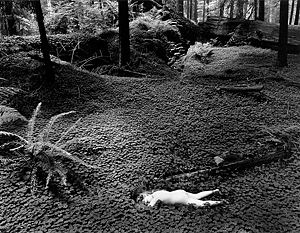 My father Wynn Bullock gave this image the simple title of Child in Forest, and it is probably the most widely recognized photograph he ever made. It was included in Edward Steichen’s world-famous exhibition and book The Family of Man and the picture generated more controversy than any other image in the collection.
My father Wynn Bullock gave this image the simple title of Child in Forest, and it is probably the most widely recognized photograph he ever made. It was included in Edward Steichen’s world-famous exhibition and book The Family of Man and the picture generated more controversy than any other image in the collection.
For years, as the exhibition traveled to museums and galleries around the globe, people would write, phone, and telegraph their questions to the Museum of Modern Art in New York. Mr. Steichen would forward them to Dad for a response. Is the child asleep or did something dreadful befall her? Does she belong where she is, did she come willingly, or was she brought to this place forcefully and then abandoned? Perhaps the figure is not a living thing at all, but rather a statue.
For Dad, the image was one of interesting contrasts – an ancient virginal forest and a young virginal child. These contrasts manifested the dynamic, cyclic character of natural forces. As he once described the making of it, he felt the light was just right, everything was spatially balanced and the relationships between events – the young child, the fresh forest covering, the prehistoric trees, the rotting logs – were all strong and exciting. Dad would encourage questioners to set aside any fears or preconceptions they might have. He would invite them to look at the photograph again. “Be with the child, feel her presence, see the leaves adorning her hair. Put yourself in the forest, watch the light, sense the life.” He would go on to say, “There may be mystery here, but it isn’t sinister. It’s the mystery of difference and of oneness, of universal forces and relationships, of dimensions we can only begin to glimpse.”
As the child in the photograph, I remember well the day it was taken, although I was only five or six years old at the time. Dad and Mom and I were traveling along Highway One in northern California so he could photograph. Around noon, we were looking for a place to stop and eat our picnic lunch. Having trouble finding a space large enough to park safely by the side of the road, we finally spied a very dusty turnout with a rickety picnic table and a trash can overflowing with litter. We stopped, ate our lunch, and then Dad wandered off into the woods. A few minutes later he returned, excited by what he had just seen.
He got his camera equipment out of the trunk of the car, and Mom and I followed him back into the woods. Walking only a few hundred feet from the dreary picnic area, we found ourselves in the middle of a primeval forest.
Dad asked me to take my clothes off and lie down in the bed of oxalis. It was not an unusual request and I already understood that when he was photographing a model, an unclothed body meant getting closer to nature. It was a good and “natural” thing to do.
When I first lay down, I was very unhappy to discover dry, prickly redwood needles underneath the lovely, soft green leaves. I’m afraid I wasn’t very cooperative until Mom arranged a blanket under my body. Then I was able to relax and I can still vividly remember the smell of the damp, rich earth; the warmth of the light playing on my body; the hushed yet thrumming energy of the forest. Dad took his pictures, Mom helped me get dressed, and we walked slowly and silently back to the car.
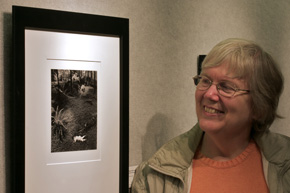 A few years later, when this photograph and another of Dad’s were selected to be part of The Family of Man show at the New York Museum of Modern Art, our local newspaper displayed a copy of it on the front page, along with a feature article. I was in the second or third grade at the time and I clipped the picture and article to share with my class during “Show and Tell.” When my turn came to stand in front of the class, I believed that I had been part of something beautiful and special. I was very proud of my father and excited about what was happening.
A few years later, when this photograph and another of Dad’s were selected to be part of The Family of Man show at the New York Museum of Modern Art, our local newspaper displayed a copy of it on the front page, along with a feature article. I was in the second or third grade at the time and I clipped the picture and article to share with my class during “Show and Tell.” When my turn came to stand in front of the class, I believed that I had been part of something beautiful and special. I was very proud of my father and excited about what was happening.
All those wonderful feelings, however, vanished the moment I held up the clipping. What I saw was shock and disbelief, what I heard was giggling, what confronted me were waves of embarrassment and discomfort. In that moment, I felt “naked” for the first time in my life and I discovered just how different my life and my family were from those of most of my friends and classmates.
My teacher was not very understanding or comforting, and the day wore on interminably before I was able to go home. Once there, I found the love and wisdom I needed to feel right and whole again.
Whenever opportunities arose during family outings, I continued working with Dad until he moved on in his photography and began to focus on other kinds of imagery. That shift happened around 1958. By then, I was about thirteen and I knew what a special gift I had been given as a valued participant in the image-making process.
~ Essay by Barbara Bullock-Wilson © 2015. All rights reserved.
|
|
Biographical Notes Prepared by Barbara Bullock-Wilson, April 2010 |
|
Wynn Bullock (April 18, 1902 – November, 16, 1975) was born in Chicago, Illinois, and raised in South Pasadena, California. As a boy, his passions were singing and athletics (football, baseball, swimming, and tennis). After high school graduation, he moved to New York to pursue a musical career and was hired as a chorus member in Irving Berlin’s Music Box Revue. He occasionally sang the primary tenor role when headliner John Steele was unable to appear and then was given a major role with the Music Box Review Road Company. During the mid-1920s, he furthered his career in Europe, studying voice and giving concerts in France, Germany, and Italy. While living in Paris, he became fascinated with the work of the Impressionists and post-Impressionists. He then discovered the work of Man Ray and Lazlo Moholy-Nagy and experienced an immediate affinity with photography, not only as an art form uniquely based on light, but also as a vehicle through which he could more creatively engage with the world. He bought his first camera and began taking pictures. During the Great Depression of the early 1930s, Wynn stopped his European travels and settled in West Virginia to manage his first wife’s family business interests. He stopped singing professionally, completed some pre-law courses at the state university, From 1938 to 1940, Wynn became deeply involved in exploring alternative processes such as solarization and bas relief. After graduation from Art Center, his experimental work was exhibited in one of L.A. County Museum’s early solo photographic exhibitions. During the early 40s, he worked as a commercial photographer and then enlisted in the Army. Released from the military to photograph for the aircraft industry, he was first employed at Lockheed and then headed the photographic department of Connors-Joyce until the end of the war. Remarried, and with a new daughter, Wynn traveled throughout California from 1945 to 1946, producing and selling postcard pictures while co-owning a commercial photographic business in Santa Maria. He also worked on developing a way to control the line effect of solarization for which he later was awarded two patents. In 1946, he settled with his family in Monterey where he had obtained the photographic concession at the Fort Ord military base. He left the concession in 1959, but continued commercial free-lance work until 1968. A major turning point in Wynn’s life as a creative photographer occurred in 1948 when he met Edward Weston. Inspired by the power and beauty of Weston’s prints, he began to In the mid-1950s, Wynn’s artistry came into the public spotlight when Edward Steichen chose two of his photographs to include in the 1955 “Family of Man” exhibition at the Museum of Modern Art. At the Corcoran Gallery in Washington, DC, his photograph “Let There Be Light,” was voted the most popular of the show. The second, “Child in Forest,” became one of the exhibition’s most memorable images. By the end of that decade, his work was being featured in many exhibitions and publications worldwide. During the early 60s, Wynn departed from black and white imagery and produced a major body of work that he referred to as “Color Light Abstractions”. For him, these photographs represented an in-depth exploration of light, manifesting his belief that light is a great force at the heart of all being, “perhaps,” as he said, “the most profound truth in the universe.” Although he was tremendously excited about this work, it proved to be In the mid-1960s, frustrated by the limitations of color printing technology, Wynn returned to making black and white photographs, continuing to expand his vision to create innovative images that reflected his deeply philosophical nature. Differentiating what he termed “reality”, the visible and the known, from “existence”, the underlying truth of things, he was ceaseless in his attempts to expand his own faculties of perception and understanding so he could come ever closer in his experiences to the essence of things. Finding the means to more fully evoke that essence was also a key part of his quest. Although he included several different alternative processes (extremely long time exposures, multiple images, up-side-down and negative printing) in his repertoire of techniques, each was always used in the service of symbolizing new ways of relating to and knowing the world. As he once said, “Searching is everything – going beyond what you know. And the test of the search is really in the things themselves, the things you In the early 70s, Wynn started on a new leg of his creative journey, one that he found completely absorbing and deeply satisfying but which was cut short by incurable cancer. Many of his photographs from that period reveal light emanating from within the heart of things, life glowing and pulsing with energy and vitality. Other photographs are of natural forms that depict or suggest universal human qualities, humanity “deeply embedded in” and re-united with nature. Throughout his career, Wynn was an active lecturer, workshop leader, and teacher, generously giving of himself to fellow seekers. As a master photographer, Wynn was one of five artists whose archives established the University of Arizona’s Center for Creative Photography. His work may also be found in the permanent collections of over 90 major institutions throughout the world as well as in numerous publications. As a person who asked the deepest questions about life and the universe and who used photography as a symbolic language to further as well as document his search for meaning, he left a legacy rich and vital in its power to inspire and transform. Family: Education: Influences: Some Noteworthy Accomplishments: Along with Ansel Adams, Harry Callahan, Aaron Siskind, and Frederick Sommer, he became part of the founding group of photographers whose archives established the Center for Creative Photography at the University of Arizona in 1975. Wynn taught advanced photography courses at the Institute of Design in Chicago during Aaron Siskind’s sabbatical and at San Francisco State College at the invitation of John Gutmann. He was a guest instructor for the Ansel Adams Yosemite Workshops. Throughout the 1960s and early 1970s, he lectured widely, led photographic workshops, and participated in many seminars and symposia on various topics and issues in photography. Photo credits, from top to bottom: Campbell Studios, NYC, 1923; F. Florian, date unknown; Todd Walker, 1967; Jack Fulton, 1974; Herman Wall, date unknown; Jim Hill, 1974.
Selected Collections Wynn Bullock photographs are in the permanent collections of more than 100 museums, ———– Amon Carter Museum of American Art, Fort Worth, TX Art Institute of Chicago, Chicago, IL Bank of America LaSalle Photography Collection, Charlotte, North Carolina Berkeley Art Museum and Pacific Film Archive, University of California, Berkeley, CA Bibliothèque nationale de France, Paris, France Cantor Arts Center, Stanford University, Stanford, CA Center for Creative Photography, University of Arizona, Tucson, AZ Chrysler Museum of Art, Norfolk, Virginia Cleveland Museum of Art, Cleveland, OH Collection of the City and County of San Francisco, San Francisco Arts Commission, San Francisco, CA College of Art, Nihon University, Tokyo, Japan Crocker Art Museum, Sacramento, CA de Saisset Museum, Santa Clara University, Santa Clara, CA Detroit Institute of Arts, Detroit, MI Family of Man Museum, Château de Clervaux, Clervaux, Luxembourg Figge Art Museum, Davenport, Iowa Fogg Museum, Harvard University, Cambridge, MA Fondazione Fotografia, Modena, Italy George Eastman Museum, Rochester, NY Henry Art Gallery, University of Washington, Seattle, WA High Museum of Art, Atlanta, GA Indiana University Art Museum, Indiana University, Bloomington, IN Institute of Art and Design at New England College, Manchester, NH J. Paul Getty Museum, Los Angeles, CA John and Mabel Ringling Museum of Art, Sarasota, FL Jordan Schnitzer Museum of Art, University of Oregon, Eugene, OR Kalamazoo Institute of Arts, Kalamazoo, MI Kiyosato Museum of Photographic Arts, Yamanashi, Japan Los Angeles County Museum of Art, Los Angeles, CA Madison Museum of Contemporary Art, Madison, WI McHenry Library Special Collections and Archives, University of California, Santa Cruz, CA Metropolitan Museum of Art, New York, NY Mills College, Oakland, CA Minneapolis Institute of Arts, Minneapolis, MN Mint Museum of Art, Charlotte, NC Monterey Museum of Art, Monterey, CA Musée d’art Contemporain de Montréal, Montréal, Québec, Canada Museum of Fine Arts, Boston, MA Museum of Fine Arts, Houston, TX Museum of Fine Arts, St. Petersburg, FL Museum of Kyushu Sangyo University, Fukuoka City, Japan Museum of Modern Art, New York, NY Museum of New Mexico, Santa Fe, NM Museum of Photographic Arts, San Diego, CA National Gallery of Art, Washington, D.C. (The book Relativity: Wynn Bullock and Albert Einsteinwith 18 platinum prints is a component of the 21st Editions Complete Collection housed in the Special Collections Library of the National Gallery of Art.) National Gallery of Australia, Canberra, Australia National Gallery of Canada, Ottawa, Canada National Gallery of Victoria, Melbourne, Australia National Museum of Modern Art, Kyoto, Japan Nelson-Atkins Museum of Art, Kansas City, MO New Orleans Museum of Art, New Orleans, LA New York Public Library, New York, NY Norton Simon Museum, Pasadena, CA Oakland Museum of California, Oakland, CA Philadelphia Museum of Art, Philadelphia, PA Photo Gallery International/Sata Corporation, Tokyo, Japan Portland Art Museum, Portland, Oregon Portland Museum of Art, Portland, Maine Princeton University Art Museum, Princeton, NJ Royal Photographic Society, Bath, England San Francisco Museum of Modern Art, San Francisco, CA Santa Barbara Museum of Art, Santa Barbara, CA Smith College, Northampton, MA Smithsonian Institution, Washington, D.C. Spencer Museum of Art, University of Kansas, Lawrence, KS Syracuse University Art Galleries, Syracuse, NY The Frances Young Tang Teaching Museum and Art Gallery, Skidmore College, Saratoga Springs, NY The Image Centre, Toronto Metropolitan University, Toronto, Canada The Snite Museum of Art, University of Notre Dame, Notre Dame, IN Tokyo College of Photography, Yokohama City, Japan Tokyo Fuji Museum of Art, Tokyo, Japan Tokyo Metropolitan Museum of Photography, Tokyo, Japan UCR/California Museum of Photography, University of California, Riverside, CA University of California, Los Angeles, CA University of Colorado, Boulder, CO University of Florida, Gainesville, FL University of Illinois, Urbana, IL University of Maryland, Baltimore County, Catonsville, MD University of Michigan Museum of Art, Ann Arbor, MI University of Minnesota, Minneapolis, MN (The book Relativity: Wynn Bullock and Albert Einsteinwith 18 platinum prints is a component of the 21st Editions Complete Collection housed in the Special Collections Library at the Anderson Library at the University of Minnesota.) University of Nebraska, Lincoln, NE University of Texas, Austin, TX University of Wyoming, Laramie, WY Victoria and Albert Museum, London, England Virginia Museum of Fine Arts, Richmond, VA Whitney Museum of American Art, New York, NY Worcester Art Museum, Worcester, MA Yale University Art Gallery, New Haven, CT Yamaguchi Prefectural Museum of Art, Yamaguchi, Japan |
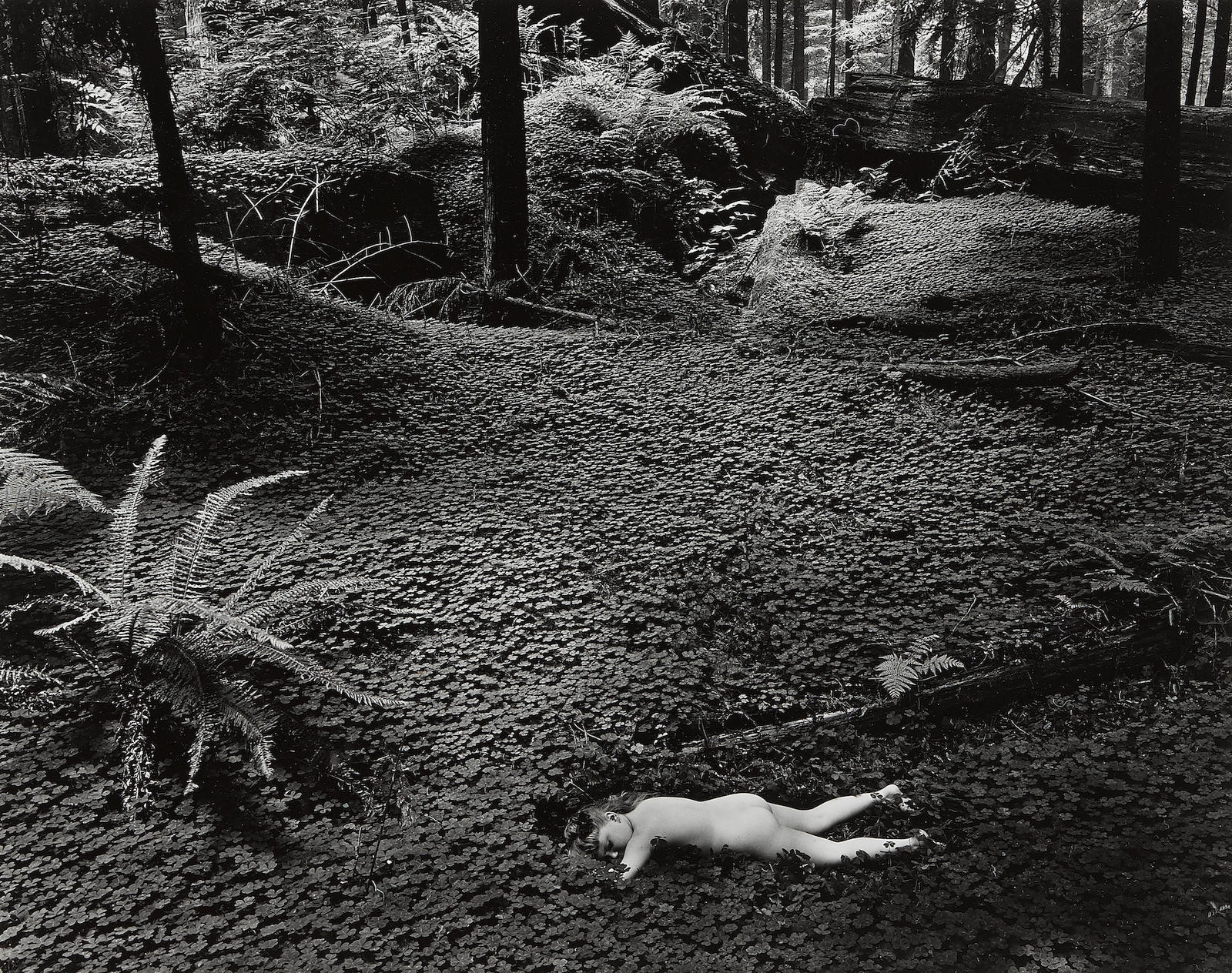
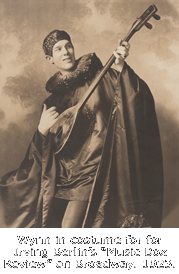
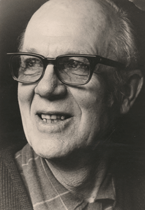 and continued to take photographs as a hobby. In 1938, Wynn moved his family back to Los Angeles and enrolled in law school at the University of Southern California where his mother Georgia P. Bullock (California’s first woman jurist) had studied law. Completely dissatisfied after a few weeks, he left USC and became a student of photography at the nearby Art Center School.
and continued to take photographs as a hobby. In 1938, Wynn moved his family back to Los Angeles and enrolled in law school at the University of Southern California where his mother Georgia P. Bullock (California’s first woman jurist) had studied law. Completely dissatisfied after a few weeks, he left USC and became a student of photography at the nearby Art Center School.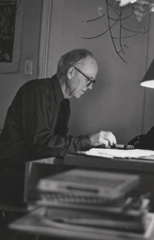 explore “straight” photography for himself. Throughout the decade of the 1950s, he devoted himself to developing his own vision, establishing deep, direct connections with nature. A lifelong learner, he also read widely in the areas of physics, general semantics, philosophy, psychology, eastern religion, and art. Studying the work of such people as Einstein, Korzybski, Whitehead, Russell, LaoTzu, and Klee, he kept evolving his own dynamic system of principles and concepts that both reflected and nurtured his creative journey.
explore “straight” photography for himself. Throughout the decade of the 1950s, he devoted himself to developing his own vision, establishing deep, direct connections with nature. A lifelong learner, he also read widely in the areas of physics, general semantics, philosophy, psychology, eastern religion, and art. Studying the work of such people as Einstein, Korzybski, Whitehead, Russell, LaoTzu, and Klee, he kept evolving his own dynamic system of principles and concepts that both reflected and nurtured his creative journey.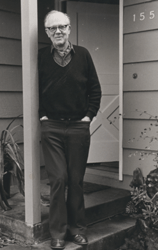 ahead of its time in terms of available resources to reproduce it, and it remained largely unknown for almost 50 years. In 2008, however, the family estate started making high-resolution scans of his original 35mm Kodachrome slides, producing archivally stable prints, and exhibiting and publishing the imagery. Finally, the work is being shared more widely as Wynn had long hoped would happen .
ahead of its time in terms of available resources to reproduce it, and it remained largely unknown for almost 50 years. In 2008, however, the family estate started making high-resolution scans of his original 35mm Kodachrome slides, producing archivally stable prints, and exhibiting and publishing the imagery. Finally, the work is being shared more widely as Wynn had long hoped would happen .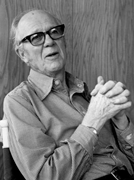 seek to understand. What is important is not what you think about them, but how they enlarge you.”
seek to understand. What is important is not what you think about them, but how they enlarge you.”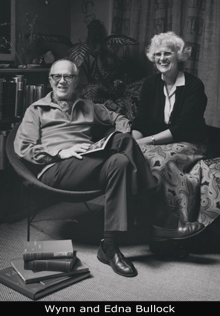 Wynn married Mary Elizabeth McCarty in 1925; the marriage ended in divorce in 1941. They had two children: Mary Wynne (Mimi) (1930) and George (1935-1942). He married Edna Jeanette Earle in 1943 and they had two daughters: Barbara Ann (1945) and Lynne Marie (1953). Mimi, Edna, Barbara, and Lynne each appear in images made during the 1950s. A year after Wynn died in 1975, Edna took up photography and enjoyed a twenty-year career as an artist before she died in 1997. Barbara formed collaborative relationships with both her parents during their lifetimes and has written extensively on their work.
Wynn married Mary Elizabeth McCarty in 1925; the marriage ended in divorce in 1941. They had two children: Mary Wynne (Mimi) (1930) and George (1935-1942). He married Edna Jeanette Earle in 1943 and they had two daughters: Barbara Ann (1945) and Lynne Marie (1953). Mimi, Edna, Barbara, and Lynne each appear in images made during the 1950s. A year after Wynn died in 1975, Edna took up photography and enjoyed a twenty-year career as an artist before she died in 1997. Barbara formed collaborative relationships with both her parents during their lifetimes and has written extensively on their work.